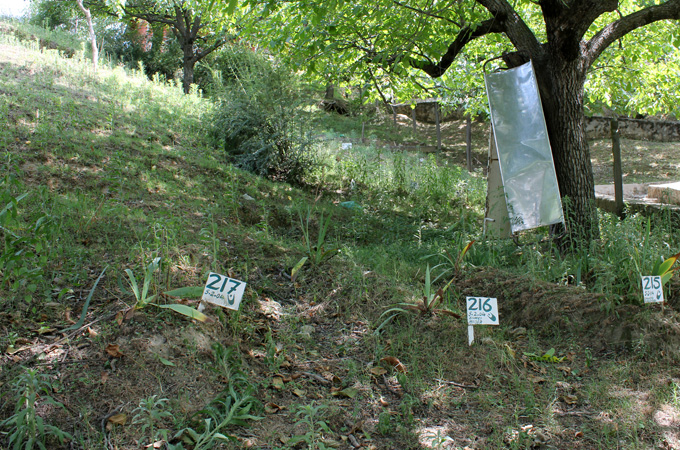
Search and recovery teams retrieved yesterday the remains of four European tourists and their Filipino guide killed in the Mayon volcano explosion last Wednesday, but treacherous terrain and erratic weather hampered efforts to bring the bodies to a safe clearing.
“As of this time, our teams are still about two hours’ walk away from Camp 1. They could not go faster than careful walk due to the very rugged and slippery terrain,” Raffy Alejandro, Bicol director of the Office of Civil Defense (OCD) told The STAR.
Thirty-five-year-old Thai national Boonchai Jattupornong, earlier reported missing, was found alive but weakened by injuries.
Camp 1 is situated at 1,500 meters of the volcano. Mayon is 2,464 meters high.
The recovery team, comprising 60 Army soldiers, found the remains of the trekkers at the 1,800 meter level.
The explosion, called phreatic by scientists, triggered an avalanche of hot boulders that buried German tourists Joanne Edosa, Roland Pietieze and Furian Stelter, and Spaniard Farah Frances who resided in Germany. Also killed was Filipino guide Jerome Berin.
A phreatic explosion occurs when a volcano’s molten rock comes in contact with water. There was heavy rain near the volcano summit on the night before the explosion.
Alejandro said it was unsafe for helicopters to land at Camp 2, which has uneven and unstable terrain.
“So we need to bring the bodies down to Camp 1 for the helicopter pick them up,” he said.
Capt. Vibar Crisostomo, spokesman for the Army’s 901st Brigade, said that rescuers found two female and two male bodies at around 6:22 a.m. yesterday at a place called the Rabbit’s Ear, located at about 1,800 meters elevation.
He said two of the fatalities – a male and a female – were in an embrace when found.
“Our rescuers failed to hold back their tears upon seeing the nearly mangled bodies of the victims,” Crisostomo said.
He said it took recovery teams about seven hours to reach the location of the victims.
Crisostomo said it took five men to carry a body down the steep and slippery slopes.
‘Unreasonably raised’ issues
Albay Gov. Joey Salceda said he would first ensure that survivors of the tragedy are attended to and the remains of the victims recovered before addressing Malacañang’s demand for explanation.
“We will confront these questions without having to demoralize our 72-man rescue team and so many other people who are risking their lives on the slopes of Mayon,” he said. “Our entire attention and efforts have been focused on rescuing the injured rather than answer issues being unreasonably raised, posed by Malacañang. If it is President Aquino, he would have texted me first,” he said.
Earlier, deputy presidential spokesperson Abigail Valte said the President was seeking an explanation on the tragedy.
“That’s what the President ordered to ask – the parameters of the danger zone. And as far as our information has yielded, even if the local government restricts tourist activities there, they have to seek permission because there are guides that just go up without asking permission,” Valte said on Tuesday.
He said the Philippine Institute of Volcanology and Seismology (Phivolcs) had already answered the question when it said that there was “zero alert” before the explosion.
Salceda said the six-kilometer permanent danger zone (PDZ) essentially covers areas around the volcano where human habitation is prohibited. He also said he has never issued any permit to climb Mayon.
“Moreover, none of these tour guide operators or those 27 now affected have ever, ever sought our permission or given notice of their climb,” he said.
“Since becoming governor, I have not permitted or signed any permit for even a single climb to the crater of Mayon,” he said.
He said tour operators would rather deal with the Department of Tourism (DOT) than with Albay Provincial Security and Emergency Management Office for activities in Mayon.
“In our country, some wanted a policy debate on DRR (disaster relief and response) while 12 people were on the brink of death without immediate medical attention and five families abroad were grieving, waiting to get a last look at their lost sons and daughters,” he said.
He said four Thai mountaineers had expressed satisfaction with the progress of the search and recovery efforts. Their conversation with Salceda took place before the rescue of their companion.
“They are very satisfied with the rescue and the medical treatment. But they are worried about their missing friend,” Salceda said.
Still alert 0
Meanwhile, Phivolcs kept its zero alert level for Mayon yesterday even after recording two rockfalls in the past 24 hours.
“Seismic parameters remain within background levels and indicate no increase in overall volcanic activity,” Phivolcs said, explaining the zero alert level.
An Alert Level 0 means “no magmatic eruption is imminent.”
But Phivolcs said climbers and Mayon visitors should remain alert for steam-driven explosions.
The DOT in Bicol also warned tourists and climbers against entering the PDZ.
“The public is strongly reminded of refraining from entry into the six-kilometer radius permanent danger zone due to the perennial threat of sudden steam-driven eruptions and rockfalls from the upper and middle slopes of the volcano,” Phivolcs said in an advisory.
Thursday 9 May 2013
http://www.philstar.com/headlines/2013/05/09/939988/5-bodies-found-mayon-thai-climber-rescued


















